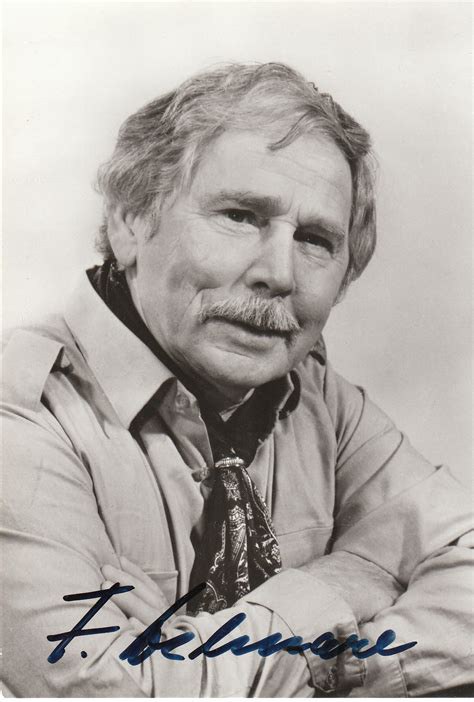保罗和保拉的传奇 Die Legende von Paul und Paula(1973)

又名: The Legend of Paul and Paula
导演: 海纳·卡罗
编剧: 海纳·卡罗 Anne Pfeuffer Ulrich Plenzdorf
主演: 安杰丽卡·多姆罗斯 温弗里德·格拉泽德 Heidemarie Wenzel 弗雷德·德尔马尔 Rolf Ludwig Käthe Reichel Hans Hardt-Hardtloff 弗朗克-奥托·申克 Dietmar Richter Eva-Maria Hagen Jürgen Frohriep 克里斯蒂安·斯泰尔 Willi Schrade Peter Gotthardt 玛格·雷格尔 Edgar Kühlow Frank Michelis Dieter Birr Victor Keune Bodo Krämer 赫塔·提勒 Achim Mentzel
制片国家/地区: 东德
上映日期: 1973-03-14(东德)
片长: 105 分钟 IMDb: tt0070299 豆瓣评分:7.4 下载地址:迅雷下载
简介:
- "Two neighbors--Paula, a single woman with two children, and Paul, a conservative bureaucrat stuck in a loveless marriage--begin to fall in love. The free-spirited Paula tries to liberate Paul from his complacent life, but it's not until tragedy and heartaches beset them both that he begins to fully appreciate her love. But is it too late?"--Container
演员:
影评:
《保罗和保拉的传奇》是一部1973年的东德cult片,讲述了两个婚姻不幸的人在舞厅相遇并陷入热恋的故事,也是默克尔最喜欢的电影。然而从女性主义的角度来看,这部电影却充满了男权主义和性别刻板印象,对女性的身份和价值缺乏尊重。
首先,这部电影的女主角保拉是一个依赖于男性的附属物。她的生活和幸福都取决于她的男性伴侣,她没有自己的职业和理想,也没有自己的声音和选择。她只是一个被动的接受者,一个忍受着男性的背叛和暴力的牺牲者,一个为了男性的爱而牺牲自己的生命的烈士。她没有展现出任何的独立性和主动性,也没有对自己的生活和命运负责。她的存在只是为了满足男性的欲望和需求,为了证明男性的爱和勇气。她的死亡也只是为了增加男性的悲剧感和英雄感。她是一个典型的男权社会中的女性形象,一个被男性塑造和定义的女性。
其次,这部电影的男主角保罗是一个典型的自我感动式的男性形象。他虽然疯狂地爱上了保拉,却不敢为了她放弃自己的家庭和工作,并视保拉的爱情为束缚和威胁。当他最终下定决心和保拉在一起时,他又表现出一种盲目的热情和自我中心的牺牲态度,不顾保拉的感受和意愿,强行闯入她的家,强迫她接受他的爱。他还把避孕的责任推给保拉,让保拉的死显得是她自己的选择,是她自愿为爱付出的代价,这是他的自私和狡猾。他的存在只是为了满足自己的欲望和需求,为了证明自己的爱和牺牲。
最后,这部电影的结局是一个典型的男权社会中的悲剧。保拉为了保罗的爱,不顾自己的健康和生命,决定要他的孩子,最终在分娩时死去。她的死亡是对女性的惩罚,却是对保罗的爱的赞美,他因为保拉的死亡而成为了一个悲情的英雄,一个伟大的父亲,一个完美的男人。他的生活和事业都得到了新的开始和机会,而保拉却只能留在他的回忆和墓碑里。这是对男性的权力和女性的无力的展示,更是对男性的主导和女性的从属的确认。
总之,这部电影虽然是一部具有反叛精神和浪漫主义色彩的作品,但从女性主义的角度来看,却也充满了男权主义和性别刻板印象。这部电影反映了当时东德的社会状况,也反映了当时的性别观念,是一个值得深入分析和批判的文化现象。
- I expected Paula would live a happy life through with her love, Paul.
I was disappointed because Paula died at the end. However, the ending was beyond happiness or misery, which made it such a vintage, in my perception. So I have to admit that it was the only decent ending that not just agreed with the movie’s overtones but vividly mirrored people’s real life in East Germany as well.
In the first scene where Paula appeared, she wore a pair of bootcut pants with a floral pattern shirt tucked in, which made her, being a young single mother look striking yet fine. The way she dressed has always been in place for street fashion ever since it came out. Even now, the style can be seen popularly, as being labeled a vintage of street wear.
In the last scene where Paula appeared, she was running across the street, in a polka dots slim dress. Her movement had never been so stunning and she looked just perfectly fine in the polka dots slim dress, which I found an abidingly crush. Her smile, her movement, and her dress all came to make her an icon of vintage German in 1970s.
The film was set in East Berlin where the destruction and consolidation were going on at some portions in the city, as can be seen in some scenes. For instance, the destruction of prewar buildings at the beginning and couple of shots were cutting through the film. Besides, the first night that Paul and Paula met, they ended up in Paul’s tiny, shabby shelter which seemed like a dumped garage sitting alone on a construction set. The camera captured these explicit scenes and details that all came up as a big picture of an overall view of the city under East Germany, which contributed a lot to its sense of reality.
Then there came the people living in the city, businessman, like the tire owner who pursued Paula implicitly, cashiers, like Paula and her coworkers, bureaucrats, like Paul and his colleagues, doctor, the one who suggested Paula to take pills to help her survive, fine artists featured in the concert scene, and many other faces that represented diverse statuses in order to label this film a symbolism of real life in East Berlin.
Further, the connection and relations of characters were played by the interacting of people from different backgrounds, joint and disjoint of relationship, like Paula and her living-in-then-thrown-out lover, Paul and his repeated unfaithful wife. The scene in which I found immensely emotional appeal was the night club dance, the moment when Paul and Paula realized that they had an instant crush on each other while dancing in others arms. As the soft tune flew in, they were making goo-goo eyes at each other. Particularly in Paula’s case, her eyes were so lost and beautiful when she stared at Paul, which I found so gripping and was convinced that they belonged to each other.
The ending was a grief, but only after I realized that Paula was dead (the subtitle was mugging and I had to find a well subtitled version on youtube) because of giving birth to her child with Paul. Initially I didn’t like the ending at all. It was too sad. But during Paula’s last conversation with her doctor, she was sincerely eager to give birth to the child, even if being aware of her death. As she said, Paul was the only one for her. So she decided to have the child. The camera followed her as she ran across the street, happily yet freely. And the end scene was Paul cuddling his three children, two with Paula and one with his ex, sleeping tight in the bed. I have to say that the music saved the ending. Without the music, the ending would be just dry and disappointing. But the uplifting tune made it more bitter-sweet than gloomy-despaired.
Finally, I found excessive interest in the scene that when Paula was picking up the coals dumped out, there were couple of shots of photos from a film called “Angélique, The road to Versailles” cutting in and out. The film was an adaption of “Angélique”, a series of historical adventure books written by French novelist duo Anne and Serge Golon. In my perception, fitting photos from that film into the scene was a reflection to the contemporary influence upon people's life in East Berlin. Though it was 1970s, people still lived in a society where the poor was scarce of care and the rich was carelessly apathetic. 这是一部以悲剧为结尾的歌舞爱情片。影片的叙述方式是倒叙,开头钢琴曲旋律明快,歌词却和死亡有关。死亡象征着告别,而画面对应的是另一种告别:大楼被炸药炸毁,保罗正在倾倒公寓里的垃圾。在标题出现后,影片又回到了顺序叙述。
影片采用平行叙事的方式,展现了保罗和保拉这对命中注定的情侣:他们是住在马路对面的邻居;他们在恋爱前就认识了对方;他们都在游乐园里遇到了自己的恋人,并因为激情而告白;他们顺利结婚,但都遇到了伴侣的出轨。最后,他们在舞厅相遇,彼此相爱。相似的过往经历让他们互相理解,更加沉迷于偷情。
在影片的高潮处,保拉邀请保罗进入她的卧室进行角色扮演。她用金色的雏菊和舞台道具装饰卧室,邀请保罗加入她的狂欢。影片以隐晦又具创造性的蒙太奇描绘他们的激情场面:他们的床就像一艘船,载着他们顺流而下,船上的嬉戏是激烈而直接的。他们的快乐从船上亲人的反应中表现出来:虽然也有人质疑这场戏过于露骨,但大多数人都被他们的真情所感动,并给予祝福。在激烈的场面中,他们停下来讨论不平等的问题。保拉说:"保罗和保拉不一样。尤其是在某些地方。" 她一直相信热情的爱可以克服一些不平等,但她看着保罗,却陷入了担忧。他们拥抱时,心于心贴在一起,而心理距离却遥遥相隔。
保拉的担心不无道理,影片也描绘了保罗和保拉之间的许多不同之处。从这些角度来看,两人几乎是截然相反的:第一次出场时,保罗穿的是素色军装,而宝拉穿的是鲜艳的衬衫;保罗是一个从医学院毕业的大学生,而宝拉是一个单亲妈妈;保罗的性格是沉稳的,他愿意为国家多服役一段时间,在妻子出轨后,他也愿意原谅妻子;宝拉的性格是泼辣的,她在知道丈夫出轨后,立即将丈夫赶出家门。这些性格上的差异让他们在感情中遇到了困难,但他们都选择为了爱情离开过去的自己。
人们常说,喜新厌旧。但与旧的事物告别一定是件好事吗?影片给出了一个否定的答案。保拉为了和保罗的爱情,放弃了原来的自己。她曾是一个勇敢自由的单亲妈妈,但在失去儿子后,她失去了自信,转而过起了安逸稳定的生活。她与自己并不喜欢的轮胎销售员结为伴侣,并为了自己的真爱心甘情愿地怀孕,最终失去了自己的生命。在这个过程中,她把自己贬低为男人的附属品:如果你喜欢一个男人,就必须为他生孩子。保罗也同样失去了原先的自己。当他意识到自己即将失去保拉的时候,他失去了理智,离开了高薪的工作,日夜守在保拉的家门口。他与保拉结婚,但最终因为她的一意孤行失去了妻子。
影片的背景是70年代的东德。随着西德恢复与东德的交流,东德社会开始发生一些变化。影片中处处呈现出新气象:老建筑被拆除;青年们在新的游乐场玩耍,超市里挤满了购物的人。与同时代的人相比,保尔和保拉这对情侣似乎更加激进:他们愿意为爱情改变自己。影片固然展现了他们美好的爱情,但最终却以悲剧收场。这种悲剧反映了影片对当时东德社会大变革的反思:这些激进的变革真的能带来好处吗?影片或许用保拉的形象来表达其暧昧的态度:激进、时尚的保拉能够无视部分社会压力,追求自己的幸福,但她也因此失去了生命。这或许也象征着当时东德人民站在社会变革的前夜所面临的纠结与彷徨。




